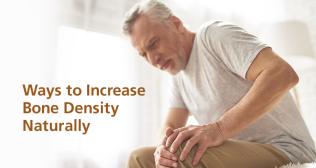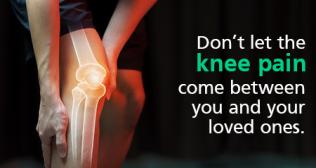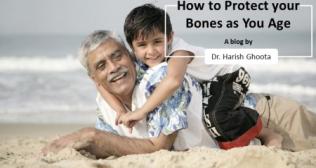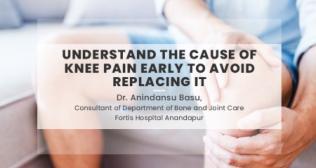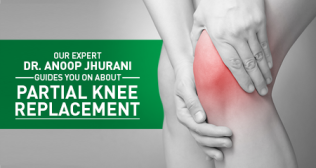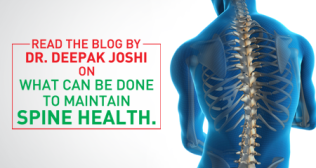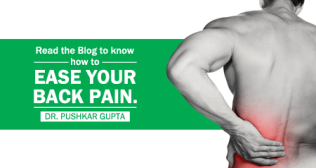
Healthy Bones For A Healthy Life

206…. Any idea what does this number reflect? We are talking about the number of bones in the human skeleton in the adult age group. Bones play many roles in our body — ranging from providing framework, protecting organs, anchoring muscles, helping in locomotion , posture maintenance and storing calcium.
While it is important to build strong and healthy bones during childhood and adolescence, it is also equally critical to take necessary steps during adulthood to protect bone health. Like any other living organs, new bone is made and old bone is broken down. This process is medically known as “Remodeling”. But after 35 years of age, bone formation decreases and bone loss increases. Hence, bones go weak slowly.
This condition that causes bones to become weak and brittle which is called “Osteoporosis”.
What affects bone health?
Bone health is affected by a number of factors. Some of the risk factors associated with Osteoporosis are -
- Gender - Women have less bone tissue than do men hence more chances of osteoporosis. Various studies suggest that 1 in 3 women above the age of 45 years are prone to osteoporosis
- Age – Especially after 35 years of age, your bones starts becoming thinner and weaker
- Sedentary lifestyle and lack of physical activity - People who are physically inactive have a higher risk of osteoporosis than do their more-active counterparts
- Amount of calcium in your diet
- Tobacco and alcohol – The regular use of tobacco and alcohol contributes significantly to weak bones. Alcohol interferes with the body's ability to absorb calcium
- Family history - Having a parent or sibling who has osteoporosis puts you at a higher risk — especially if you also have a family history of fractures due to osteoporosis
- Abnormal Thyroid Functioning - Hypo or hyper thyroid state can cause bone loss
- Menopause - In women, bone loss increases dramatically at menopause due to dropping estrogen levels. Prolonged absence of menstruation (amenorrhea) before menopause also increases the risk for osteoporosis
- Other conditions - Stomach surgery, weight-loss surgery and conditions such as Crohn's disease, celiac disease and Cushing's disease can affect your body's ability to absorb calcium
- Certain medications - Long-term use of corticosteroid medications, such as prednisone, cortisone, prednisolone and dexamethasone, are deterrent to bone health. Other drugs like methotrexate, some anti-seizure medications, such as phenytoin (Dilantin) and proton pump inhibitors
What can I do to keep my bones healthy?
While there are many risk factors associated with osteoporosis, you can take a few simple steps to prevent or slow bone loss.
- Include plenty of calcium in your diet. For adults ages 19 to 50 and men ages 51 to 70, the recommended dietary allowance (RDA) is 1,000 milligrams of calcium a day. The recommendation increases to 1,200 mg a day for women after age 50 and for men after age 70. Good sources of calcium include dairy products, almonds, broccoli, soy products, such as tofu. If you find it difficult to get enough calcium from your diet, ask your doctor about supplements
- Pay attention to vitamin D. Your body needs vitamin D to absorb calcium. For adults ages 19 to 70, the RDA of vitamin D is 600 international units (IUs) a day. The recommendation increases to 800 IUs a day for adults age 71 and older.?Good sources of vitamin D include oily fish, such as tuna and sardines, egg yolks, and fortified milk. Sunlight also contributes to the body's production of vitamin D. If you're worried about getting enough vitamin D, ask your doctor about supplements.
- Include physical activity in your daily routine. Weight-bearing exercises, such as walking, jogging, tennis and climbing stairs, can help you build strong bones and slow the bone loss.
- Avoid substance abuse. Don't smoke. Restrict the alcohol intake.
What are the symptoms of Osteoporosis and how is this diagnosed?
Often this is referred as "the silent thief" because bone loss often causes no symptoms. People may not know that they have osteoporosis until their bones become so weak that a sudden strain, bump, or fall causes a bone fracture.
Sometimes it can be seen on an X-ray when there is a lot of bone loss. But the most effective technique to detect Osteoporosis early on is Bone Density Test. The results will help your doctor gauge your bone density and determine your rate of bone loss. By evaluating this information and your risk factors, your doctor can assess whether you might be a candidate for medication to help slow bone loss.
Last but not least, don’t let osteoporosis get in the way of your life. Get your bone density checked and pre-empt the condition.
* Written by Dr Mohit Arora, Senior Consultant Orthopedic Surgeon at Fortis Escorts Hospital (Amritsar)
Categories
Clear allMeet the doctor

- Orthopaedics | Orthopaedics
-
13 Years
-
700







